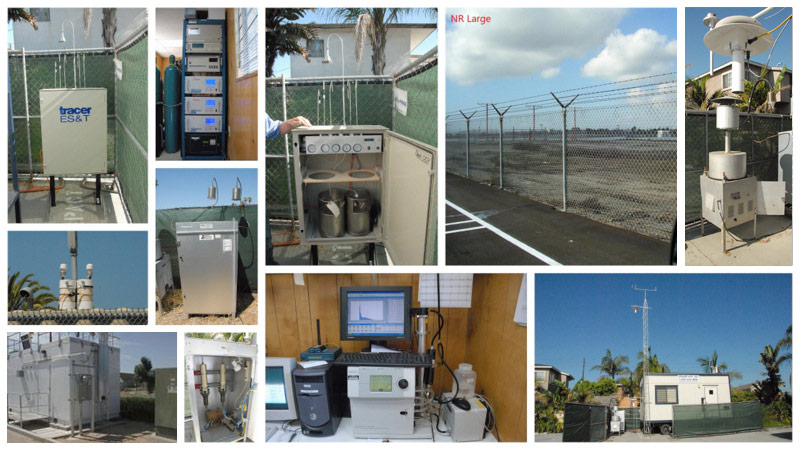The primary objective of the Study was to assess the incremental impact of LAX operations on local air quality, by:
- Quantifying ambient air concentrations of gases and particulate matter in neighborhoods near LAX and determine how these vary in space and time
- Determining significant sources of air pollutant emissions in the study area and characterize the emissions with respect to rate and chemical composition.
- Determining the contribution of various airport-related activities on selected air pollutant concentrations relative to the contribution from other, non-airport sources in the surrounding area
PHASES I AND II (DEMONSTRATION PROJECT) focused on the Preliminary Work that included:
- Data collection and development of preliminary emissions inventory
- Sampling/characterized mobile source fuels used on and around Airport
- 42 Days of monitoring at five locations near airport-related sources of air pollutants: (LINK to site map in the Project Materials page)
- Tested sampling and monitoring techniques
- Determined pollutant levels at monitoring sites
- Determined most effective methods to detect airport-related emissions
- Provided scientific input for placement of monitoring locations for Phase III
The monitoring test programs conducted during Phases I and II, along with additional AQMD sponsored taxiway sampling conducted in 2011, helped guide the monitoring and sampling protocols being used in Phase III.
PHASE III APPROACH
A total of 17 monitoring sites, consisting of core, satellite, and gradient sampling sites were used. These sites were located in the following areas:
- Core Monitoring Stations - (4):
- Community North - Westchester
- Community South - El Segundo
- Community East - Lennox
- Upwind Northwest Site, referred to as the “Air Quality” site - Playa del Rey
Core monitoring stations included a comprehensive array of monitoring equipment that remained at the same location throughout the monitoring period to provide continuous or time-integrated measurements of a variety of air pollutants. Examples of pollutants that were monitored included particulate matter, carbon monoxide, sulfur dioxide, nitrogen oxides, black carbon, volatile organic compounds, and ultrafine particles.
- Satellite Sites – (4):
- Hawthorne
- Westchester
- El Segundo
- West of LAX
- Gradient Sampling Sites (9) - provided measurements for a subset of air pollutants throughout the areas surrounding the airport.
The combination of monitor types provided key data regarding the spatial distribution and concentration gradients of target pollutants around LAX. The monitoring data was used in several different methods of sophisticated modeling to draw correlations between the characteristics of air pollutant sources at LAX and air pollutant receptors in the surrounding areas.

